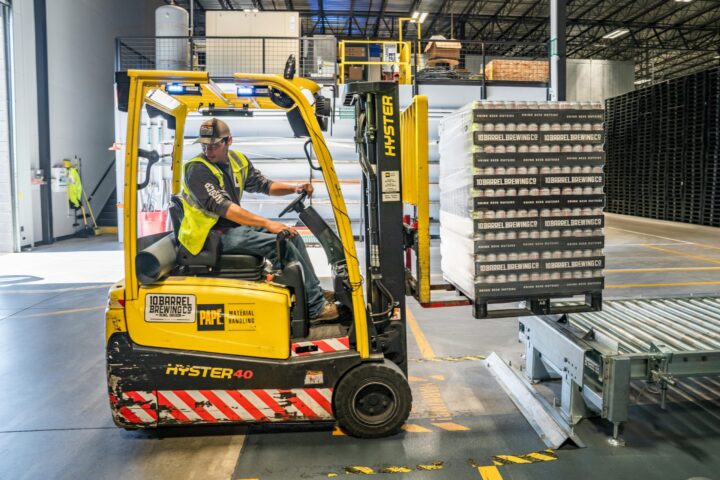The following contribution is from another author.
Working with machines is a daily reality for many industries, from manufacturing to construction and agriculture. Machines boost productivity but pose serious risks to workers if not handled safely and properly.
Did you know that approximately 15% of injuries that lead to total disability are caused by not wearing proper personal protective equipment (PPE)? According to the Occupational Safety and Health Administration (OSHA), using PPE correctly can prevent almost 40% of work-related injuries and illnesses.
But what is the most common injury caused by working with machines? Lacerations are the most common injuries resulting from unsafely operating a machine. Minor cuts, bruises and life-threatening accidents can also happen when protocols for operating a machine aren’t followed.
Let’s look into these common injuries that might happen when working with machines unsafely.
Cuts and Lacerations
When working with machines, you’re at risk of sustaining cuts and lacerations due to sharp edges and moving parts. These injuries can occur if you come into contact with exposed blades, rotating equipment, or any jagged surfaces on the machinery.
Always wear appropriate protective gear, like gloves and safety goggles, to minimize the chances of getting cut.
If you get a cut or laceration, stop working as soon as possible and seek first aid. Ignoring even minor cuts can lead to infections, which can further complicate the injury. Clean the wound thoroughly with soap and water, apply an antiseptic, and cover it with a sterile bandage. If the cut is deep or won’t stop bleeding, seek medical attention immediately to prevent any complications.
To keep workers from getting cuts and scrapes, OSHA rules state that safety measures must be strictly followed. These include using the right safety gear and keeping machines in good shape. If companies don’t follow these rules and workers are injured seriously, injured workers can seek the help of OSHA attorneys who can help hold the responsible party accountable.
Crushed Fingers and Hands
To prevent crushed fingers and hands, always be mindful of moving machine parts and maintain a safe distance when operating equipment.
Pay attention to your surroundings and keep your hands away from any pinch points or areas where crushing can occur. When working with machinery, make sure to follow all safety protocols and procedures to minimize the risk of accidents.
Crushed fingers and hands are common injuries in workplaces where machines are used improperly. These injuries can result in severe pain, loss of function, and even permanent damage.
Be vigilant and cautious to protect yourself from these dangers. Make sure that all safety guards are in place before operating any equipment.
Strains and Sprains
Strains and sprains are injuries that can occur when muscles or tendons are overstretched or torn. These injuries often result from sudden movements, lifting heavy objects incorrectly, or repetitive motions while working with machines.
When using machinery, pay attention to your body’s limits and avoid pushing yourself beyond what you can safely handle. Proper lifting techniques, such as bending your knees and using your legs instead of your back, can help prevent strains and sprains. Taking regular breaks to stretch and rest your muscles can reduce the risk of injury.
Ignoring the signs of strain, such as pain, swelling, or limited range of motion, can lead to more severe injuries that may require medical intervention. If you experience any discomfort while working with machinery, stop immediately and seek medical attention if needed.
Burns and Electrocution
To prevent burns and electrocution while operating machinery, be cautious of potential hazards and follow safety protocols at all times. Burns can occur from contact with hot surfaces or materials, steam, or flames generated by machines. All machinery should be properly maintained to prevent overheating or leaks that could result in burns.
Always wear appropriate personal protective equipment, such as heat-resistant gloves and clothing, when working with equipment that poses a burn risk.
Electrocution is another serious risk when working with machinery that involves electrical components. To avoid this, make sure all equipment is properly grounded and insulated.
Never bypass safety mechanisms or attempt to repair electrical issues without the necessary training. Always disconnect machinery from power sources before performing maintenance or repairs to prevent accidental electrocution.
Amputations and Fractures
Amputations and fractures are injuries that can result from unsafe machine work practices. When working with machines, you must follow safety protocols to prevent these severe injuries. Amputations involve the loss of a body part, often fingers, hands, or limbs, due to contact with moving machine parts.
Fractures occur when bones break under excessive force, typically from being caught in or struck by machinery.
To avoid these injuries, always wear gloves and steel-toe boots, when operating machinery. Proper training on machine operation and maintenance is necessary to understand the risks involved and how to reduce them effectively.
Conclusion
Working with machines unsafely can lead to serious injuries. Always follow safety protocols, wear proper protective gear, and receive proper training when operating machinery. Your safety and well-being should always be the top priority when working with machines to prevent these common injuries from occurring.
Stay safe and take precautions to avoid unnecessary risks in the workplace.

















moraya
https://www.cairoaqar.com/moraya-compound-new-capital/
Nice Information